Join More Than 50,000+ Subscribers and get latest camera news and rumors
NEW CAMERA VIDEOS ON YOUTUBE
|
By admin, on September 24th, 2012
 Before we start, just a quick reminder of 6D Major specification – Newly announced Canon 6D features new 20.2-megapixel full-frame CMOS sensor and DIGIC 5+ Image Processor, 11-Point AF with Center Cross-Type Point, 63-Zone Dual Layer Metering Sensor, Extended ISO Range of 50-102400, Up to 4.5 Full Resolution FPS and Built-In HDR and Multiple Exposure Modes. Before we start, just a quick reminder of 6D Major specification – Newly announced Canon 6D features new 20.2-megapixel full-frame CMOS sensor and DIGIC 5+ Image Processor, 11-Point AF with Center Cross-Type Point, 63-Zone Dual Layer Metering Sensor, Extended ISO Range of 50-102400, Up to 4.5 Full Resolution FPS and Built-In HDR and Multiple Exposure Modes.
Building upon the qualities that made the EOS 5D Mark II camera so successful, the EOS 6D bridges the gap for budget-minded photographers, videographers and cinematographers who are eager to step up into the world of full-frame imaging. but how this camera stand in front of 5D Mark III, let’s see the specification comparison below
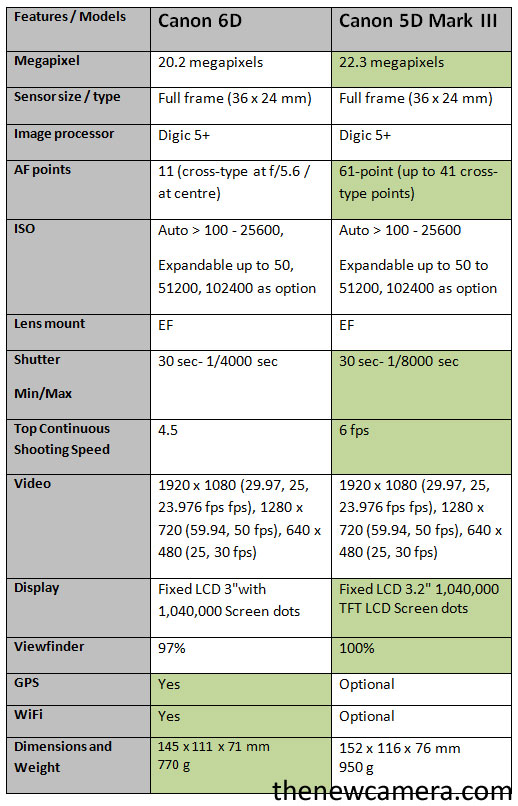
It’s no doubt that Canon 5D Mark III have a very advance AF system compared to 6D,
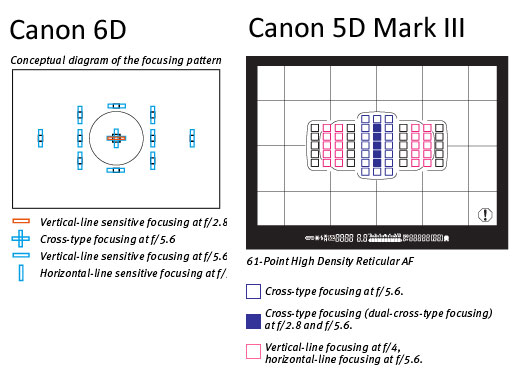
Canon 6D and 5D Mark III share same ISO range, The AF system of Canon 5D Mark III is advance compared to Canon 6D but the core specification of both the camera says
Canon 6D AF Working Range : Center AF Point: EV -3 to 18
Canon 5D Mark III AF Working Range: EV -2 to 18
AF working range also depend on type of lenses you use, but under test condition the Canon 6D (center) AF point will perform better under low-light environment compared to 5D Mark III.
Conclusion
Canon 5D Mark III have more shutter range of 1/8000, Fast continuous shooting speed with bit more megapixel, better LCD screen and a 100% viewfinder.
Canon 6D will cost you approx $ 1.3K less than Canon 5D Mark III, features Full Frame sensor and same ISO range as 5D Mark III with DIGI5+ image processor and built in WiFi with GPS.
The decision is your’s but being a nature photographer I will prefer 6D to save few bucks for new lenses.
Buy and Support
Canon 6D from Amazon
Canon 5D Mark III from Amazon
By admin, on September 21st, 2012
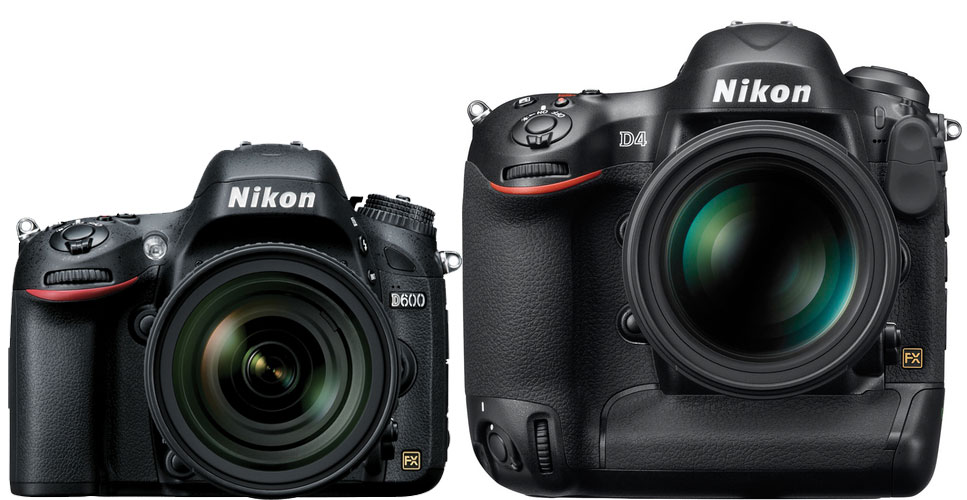 Nikon D600 is recently announced affordable fullframe camera from Nikon, see the specification comparison below and select the best camera based on your needs, Nikon D600 is recently announced affordable fullframe camera from Nikon, see the specification comparison below and select the best camera based on your needs,
Nikon D600 vs. Nikon D4 Specification Comparison
 Nikon D600 vs. Nikon D4 sensor score Nikon D600 vs. Nikon D4 sensor score
We have also included Nikon D600 vs Nikon D4 sensor score, Nikon D600 sensor showing better result in every test and even the low-light score of Nikon D600 is bit better than the Nikon D4 flagship full-frame camera.
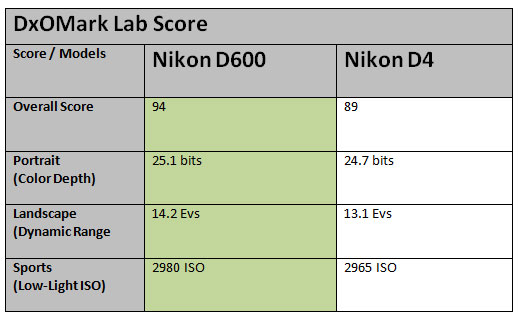 Nikon D600 Price vs. Nikon D4 Price Nikon D600 Price vs. Nikon D4 Price
Nikon D600 is more affordable and comes at $2K and for Nikon D4 you have to pay approx $6k.
Conclusion.
Nikon D600 is affordable, excellent performer and bit light weight and small, Nikon D4 have better standard ISO range, better AF system and fast shutter + Continuous shooting speed.
Based on High-ISO test, Specification Comparison, DXOMark Lab report and Nikon D600 price difference, we recommend Nikon D600 for our users. But if you want neat High-ISO images (ISO 3200+) and advance AF system with fast burst speed, you may move towards D4.
Buy Nikon D600 from Amazon | B&H
Buy Nikon D4 from Amazon | B&H
See more Nikon D600 Comparison review:
Nikon D600 vs Nikon D800
Nikon D600 vs Nikon D700
By admin, on September 20th, 2012
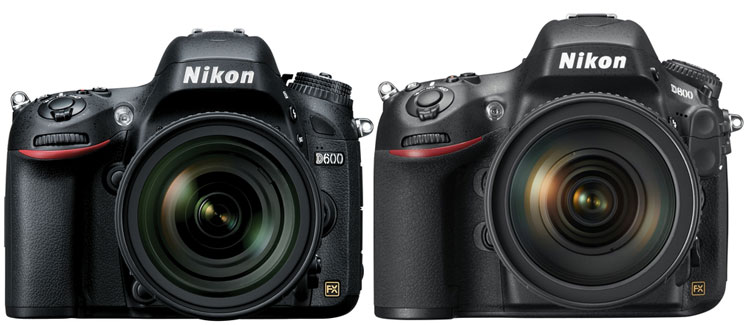
Nikon D600 vs Nikon D800
The recently announced Nikon D600 Full Frame Camera comes at $2K range and D800 comes at $3K range (body only), the new Nikon D600 features newly developed 24.7 Megapixel FF CMOS sensor, Standard ISO range of 100-6400, expandable to 50-25600, 39 focus points AF coverage to full-fill your daily needs.
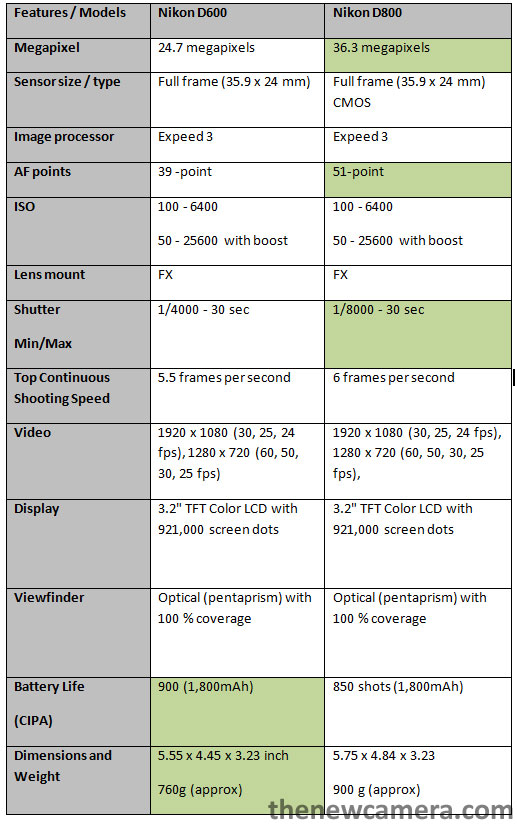
Advantages of Nikon D600
Nikon D600 cost your approx $1000 less than the Nikon D800, Nikon D600 is bit slimmer and lighter.
Both camera features Full frame sensor, Nikon D600 is a 36.3 megapixel monster whereas Nikon D600 features 24.7 Megapixels and both the camera share same standard ISO range of 100-6400.
Now its time to see some High ISO test, imagine-resource now have D600 high resolution samples, so I have take two samples of both the camera at ISO 6400 and 25600, see the results below
Nikon D600 vs Nikon D800 High ISO Test
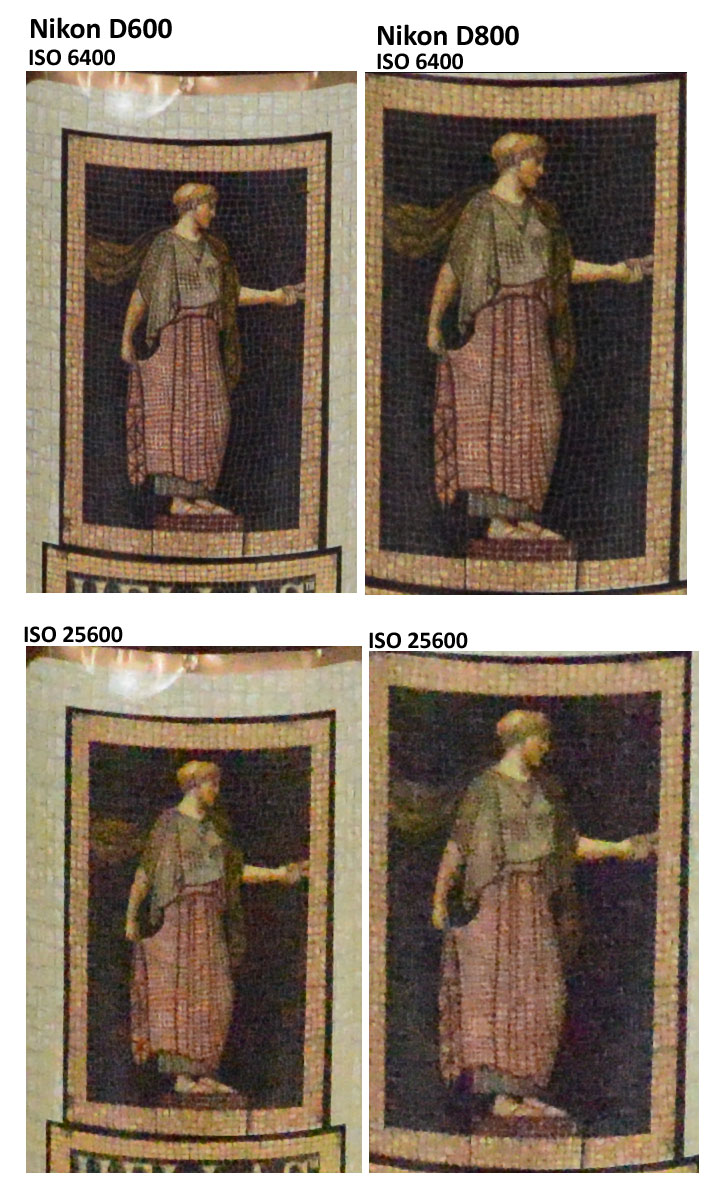
Nikon D600 Sensor Score
Nikon D600 score Just 1 point less than Nikon D800 in DxOMark Lab, We have the Top 10 rated cameras of DxO Mark (below) Click to enlarge
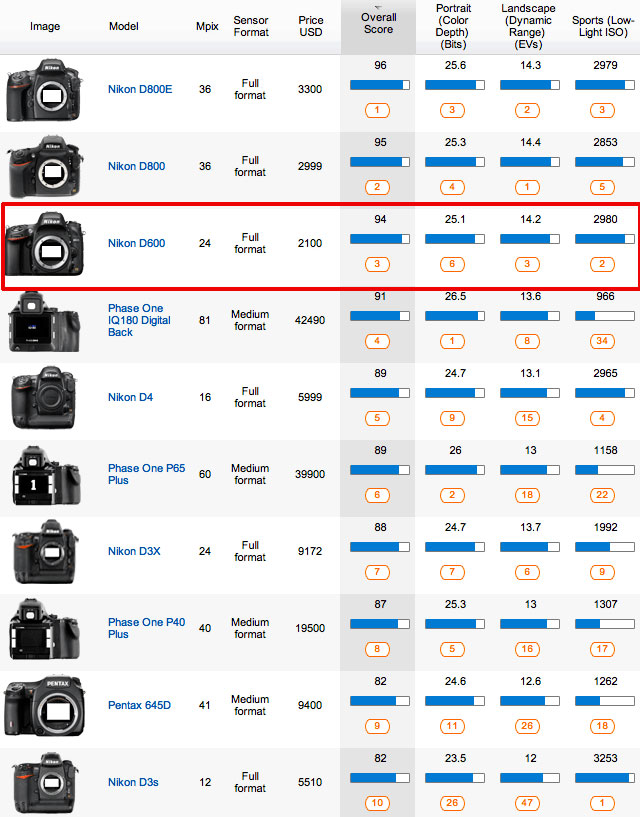
Conclusion
From the ISO test and other specification review we know that Nikon D600 is also a excellent DSLR with eye-catching features, but if you need more AF point and Megapixel you may move towards Nikon D800.
Buy Nikon D600 from Amazon
Buy Nikon D800 from Amazon
See more Nikon D600 Comparison review:
Nikon D600 vs. Nikon D4
Nikon D600 vs. Nikon D700
By admin, on August 10th, 2012
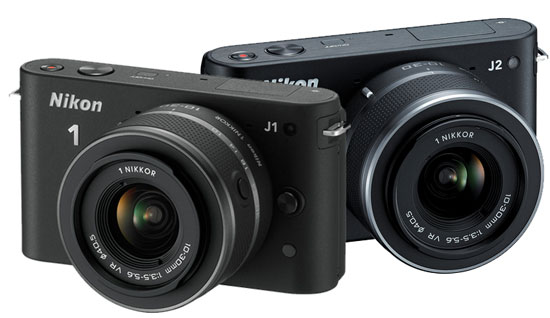
Nikon J1 vs Nikon J2 Specification Comparison review, both the camera have almost same specification, read the review and share your thought with us.
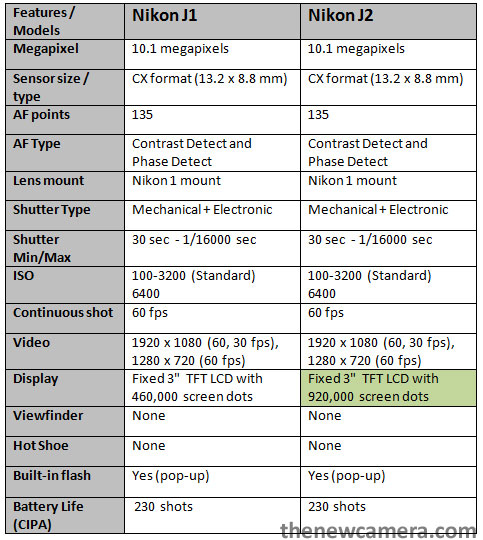
All the major specification of both the camera is same except the LCD display resolution, the New Nikon 1 J2 features higher resolution LCD having 920,000 screen dots and Nikon J2 having lower resolution LCD with 460,000 screen dots.
New features in Nikon J2
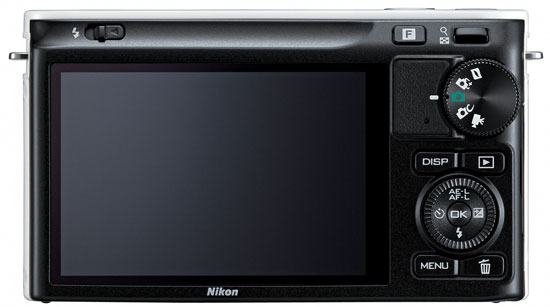
New LCD Display: Same size but more resolution, the new J2 features Fixed 3″ TFT LCD with 920,000 screen dots.

Creative Mode: The new Creative Mode accessible from the Mode Dial. When in Creative Mode, photographers will be able to take advantage of several shooting modes including Panorama, Selective Color, Miniature, Soft, Night Landscape, Backlighting and Night Portraits.
Metallic camera body: The New Nikon 1 J2 will sport a metallic camera body, and enhanced grip design.
Colors Available: White, Black, Silver and Pink, as well as two new colors, a deep Red and Orange.
Conclusion: Nikon J1 owners should wait for Nikon J3, Nikon J2 is not a perfect replacement for old J1 camera, the camera sensor, image processor and rest all the major specification is same as previous model.
By admin, on July 27th, 2012
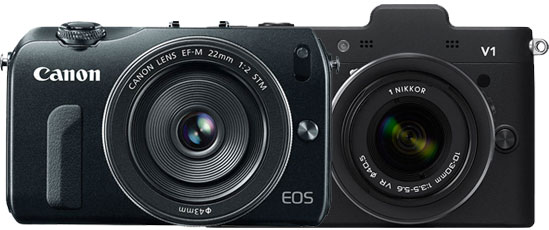 Canon recently announced its first APS-C sensor based mirrorless camera and from Nikon we have Nikon V1 system with 1 inch sensor, read the comparison review below and find out which one is better and why, share your thoughts with us Canon recently announced its first APS-C sensor based mirrorless camera and from Nikon we have Nikon V1 system with 1 inch sensor, read the comparison review below and find out which one is better and why, share your thoughts with us
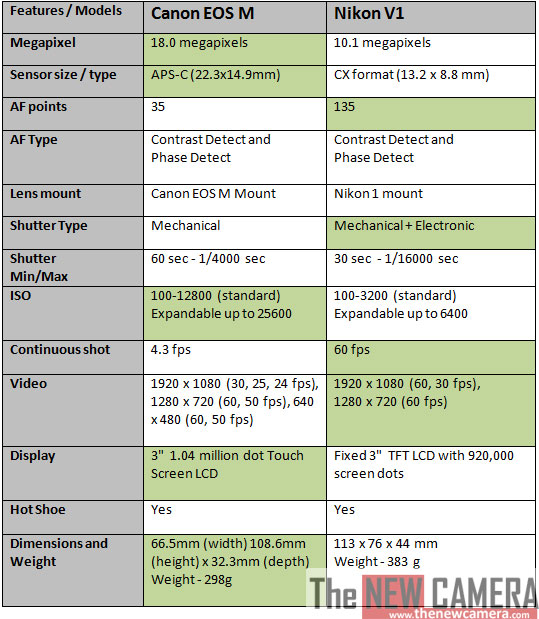
Sensor and image processor:
Nikon V1 uses 1 inch 10 Megapixel CMOS sensor and Expeed 3 image processor, Canon EOS M uses 18 Megapixel APS-C CMOS sensor and latest DIGIC 5 image processor.
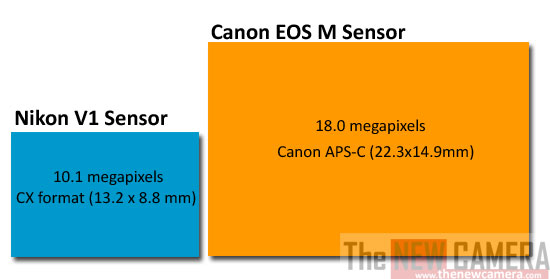 sensor size comparison sensor size comparison
ISO, Noise Levels & Dynamic Range
Large sensors produce low noise and higher dynamic range. Canon EOS sensor offers standard ISO sensitivity up to 12800 for still image shooting and expandable up to 25600, on the other hand Nikon small 1 inch sensor offers standard ISO sensitivity up to 3200 and expandable up to 6400 only.
AF system
Nikon V1 features the 135 AF point system with Phase and contrast detection AF, Canon EOS M comes with 35 point AF system with Phase and contrast detection AF system and with EOS M photographers can simply touch the display to pinpoint the area on which the camera should focus and instantly capture a still image.
The V1 AF system is very fast and you do 10 fps shooting with full time AF tracking, the speed of EOS M is limited to 4.3 fps only.
Shutter Speed – If we look at the type of shutter used and shutter speed in both the camera, the Nikon V1 comes out as a clear winner
|
Shutter Type |
Continuous shooting |
Shutter |
| Min |
Max |
| Nikon 1 |
Mechanical + Electronic |
10 fps – Mech. Shutter60fps – Elect. shutter |
30 sec |
1/16000 sec |
| Canon EOS M |
Mechanical |
4.2 fps |
60 sec |
1/4000 sec |
Video
Nikon offer Full HD Video recording at 60 fps, Canon EOS M Full HD video recording is limited to 30 fps only, at HD mode you can select 60 fps speed, Both camera offers full time AF during movie mode.
Display
Nikon V1 with Fixed 3″ TFT LCD with 920,000 screen dots, whereas Canon EOS M comes with Touch Screen 3.0-inch Clear View LCD monitor II (approximately 1,040,000 dots) that features multi-touch operation allowing users to do “pinch-to-zoom” and “swiping” to scroll between pictures and Touch AF technology for video and still shooting.
Flash:
Canon EOS M is Compatible with all Canon Speedlite accessories including the new Speedlite 600EX and Speedlite Transmitter ST-E3-RT.
Nikon V1 has only one option the Nikon 1 SB-N5 Speedlight made for Nikon 1 series camera.
Viewfinder:
No viewfinder or any option available for Canon EOS M Mirrorless camera.
Nikon V1 offers 1440k dot TFT EVF, good option for viewfinder lovers.
Overall conclusion: If you are looking for a compact camera system with DSLR image quality, Buy Canon EOS M.
Nikon 1 system is recommended for sport & Action Photographers, it features advance AF system and continuous shooting up to 60fps, but remember the sensor size is small compared to Canon EOS M, so you get limited dynamic and ISO range.
Shop and Support
Buy Canon EOS M from B&H
Buy Nikon V1 from Amazon or B&H
By admin, on July 3rd, 2012
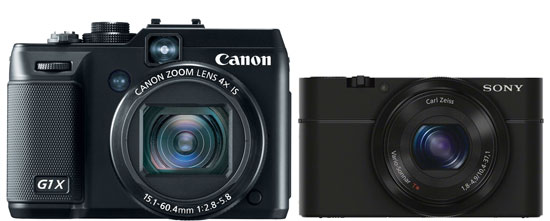 Both camera are made for pro shooters, see the specification comparison review of both the compact camera below and share your though with us, Both camera are made for pro shooters, see the specification comparison review of both the compact camera below and share your though with us,
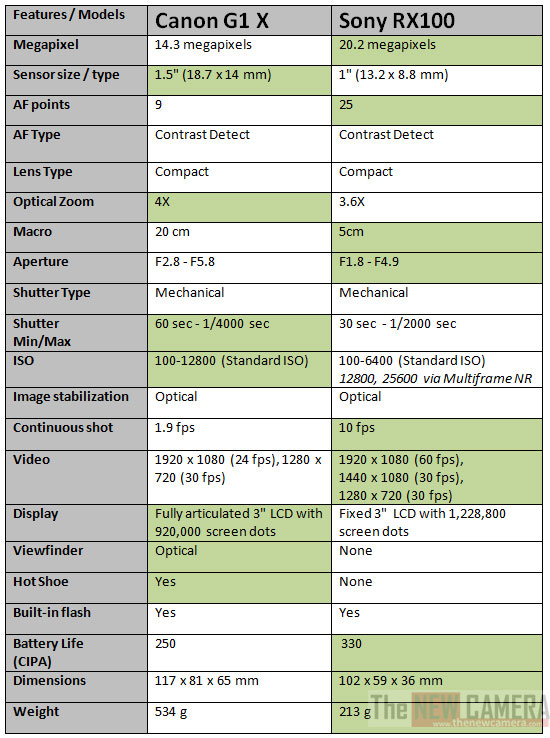
Sensor and image processor: Canon G1 X features 14 Megapixel 1.5 inch CMOS sensor and DIGIC V image processor, with the big sensor and advance image processor you get better ISO range and less noise in your images. Sony RX 100 features 20 Megapixel 1 inch sensor and latest generation of Bionz image processor, but Sony RX100 sensor is small compared to Canon G1 X.
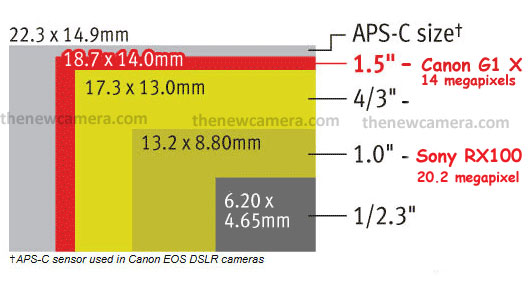 Noise Levels & Dynamic Range: Large sensors with larger pixels produce low noise, more details and higher dynamic range, See the High ISO image comparison between Canon G1 X and Sony RX 100. Noise Levels & Dynamic Range: Large sensors with larger pixels produce low noise, more details and higher dynamic range, See the High ISO image comparison between Canon G1 X and Sony RX 100.
The ISO: The standard ISO range of Sony RX100 is limited to 6400, after that you have to use Multi Frame NR, 12800 and 25600 settings are achieved through combining Multi Frame Noise Reduction. In Canon G1 X you get standard ISO range from 100 to 12800.
Lens: Sony RX 100 features bright F1.8 Carl Zeiss Vario-Sonnar T lens with 3.6x zoom optical zoom and better macro mode, canon features bit bigger 4x Optical Zoom.
Shutter – The Canon G1 X offers more wide shutter range compared to Sony Rx100,
|
Shutter Type |
Continuous shooting |
Shutter |
| Min |
Max |
| Sony RX 100 |
Mechanical |
2.5, 10 fps |
30 sec |
1/2000 sec |
| Canon GX 1 |
Mechanical |
1.9 fps |
60 sec |
1/4000 sec |
Video – Both the camera offers Full HD video recording, Canon G1 X Full HD video recording is limited to 30 fps only and Sony RX 100 supports 60fps at Full HD.
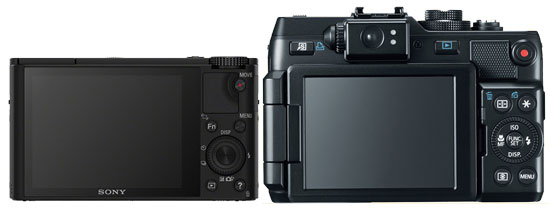
Display – The Canon G1 X comes with Fully articulated 3″ Color LCD with 920,000 screen dots, The Sony RX 100 features with Fixed 3″ Color LCD with 1,228,800 screen dots.
View finder – Canon G1X features Optical viewfinder, No viewfinder available in Sony RX 100.
Pocketable – Sony RX 100 easily fits in jeans pocket but Canon G1 X need a Jacket pocket, Sony Cyber-shot DSC-RX100 is approx 13% (15.1 mm) narrower, 45% (28.8 mm) thinner and 28% (22.4 mm) shorter than Canon PowerShot G1 X.
Sony Rx 100 is fast compared to G1 X: Sony RX 100 has high-speed autofocus that locks onto a subject in as quickly as 0.13 seconds, The shot to shot time of RX 100 is approx 0.36 second only whereas the shot to shot time of Canon G1 X is approx 2.67 seconds.
Overall conclusion: With Canon G1 X you get vari-angle display, optical view-finder and more standard ISO range / better low-light performance with Sony RX 100 you get Fast AF performance, more resolution, better video & macro mode in a ultra compact size body.
Buy Canon G1 X at Amazon
Buy Sony RX 100 at Amazon
See more about Canon G1 X | See more about Sony RX100
By admin, on June 12th, 2012
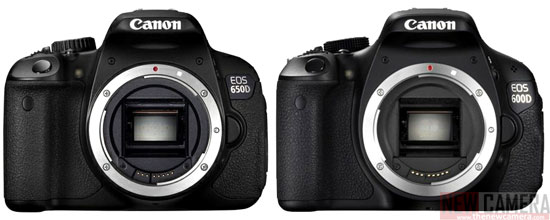
Canon 650D vs Canon 600D, take a look at 650D specification comparison review and share your thought with us,
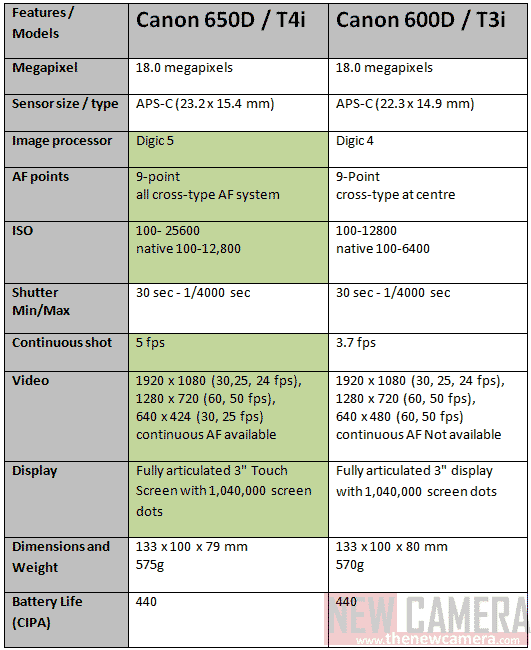
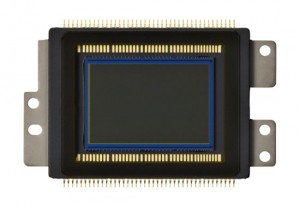 Canon 650D image sensor Canon 650D uses 18MP APS-C Hybrid CMOS sensor with phase and contrast detection AF system, enables faster and more precise autofocus compared to 600D, you also get standard ISO range up to 100 to 12800, and expandable up to 25600.
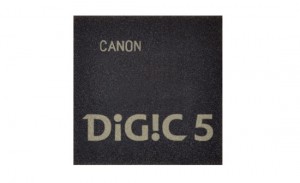 Canon 650D image processor New Canon DIGIC V Image processor: The New image processor used in Canon 650D improves the overall speed & response time of camera, It increases the Continuous shooting speed up to 5 fps and creates less noise in your JPEG images compared to 600D, the fast DIGIC V image processor also enables the camera to perform sophisticated functions such as in camera HDR Backlight Control, NR mode, art filters, lens correction and much more.
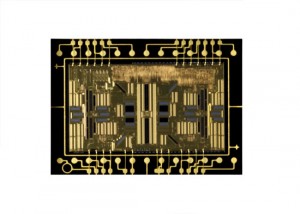 Canon 650D AF sensor New dual AF system: Canon 600D takes lot of time to do AF when Live view is on and No AF is available during movie recording, the 650D comes with improved Hybrid phase and contrast detection AF system, It also offers Continuous AF during Video Recording, Touch Focus and Touch Click Technology, see more details below
There are four different methods of AF available during live view shooting:
 Face Track mode detects a face, and continuously focuses and tracks it by switching AF points even when the subject moves to a side profile; Face Track mode detects a face, and continuously focuses and tracks it by switching AF points even when the subject moves to a side profile;
FlexiZone – Multi AF divides the scene into 31 AF points prioritizing the centre and subject in the foreground;
FlexiZone – Single AF mode and Quick mode, allows the focal point to be changed by touching the exact area on the LCD.
Continuous (Pre) AF mode, subjects will always be in focus even before the shutter is activated for improved focusing speed. What’s more, users will be able to perform familiar multi-touch gestures (pinch, spread and swipe actions) to zoom in and out of shots, view images and flip pages.
Canon 650D AF is approx 2X fast compared 600D during live view mode: Conventional contrast-detection focus works by shifting focus back and forth until the peak contrast is detected; the new Hybrid CMOS AF System improves this by predicting the subject’s location and approximate focus using phase detection, which makes auto-focusing twice as fast when the subject is in the zone (approx. middle of the frame).
Continuous AF during Video Recording: Yes its true, Canon 650D can do Continuous AF during Video Recording, the Rebel T4i features Canon’s new Movie Servo AF providing a quiet, continuous AF during HD video recording when using one of Canon’s newly introduced Stepping Motor (STM) lenses. The silent continuous autofocus when shooting HD video helps ensure the camera only captures the sounds of the scene being recorded.
Improved Imaging Performance Features: The EOS 650D helps novice photographers capture great images and video, even in low-light with a range of new performance features:
- Handheld Night Scene mode
- HDR Backlight Control mode
- Multi-Shot Noise Reduction
Handheld Night Scene and Multi-Shot Noise Reduction captures 4 images rapidly and combine them into one blur and noise free image.
HDR Backlight Control captures images at three different exposures – under, correctly, and over-exposed – and combining them into one HDR image displaying both highlight and shadow detail.
Video snap-shot mode of canon 650D is similar to Canon 600D, nothing new.
Touch screen with 650D: For the first time canon Rebel comes with touch display, EOS controls are integrated into an intuitive 3-inch Vari-Angle Clear View LCD II Touch Screen Monitor
New STM Lenses for movie recording
The new EF-S18-135mm f/3.5-5.6 IS STM has been developed to improve movie-shooting capabilities with improved image quality throughout the entire zoom range and silent, seamless focusing. The new stepping motor drive delivers ultra smooth and precise focusing during movie recording with continuous auto-focus. Coupled with the Movie Servo AF in the EOS 650D, the camera’s built-in stereo microphone will not pick up any focusing noises while shooting scenes that require silence, and a zoom ring lock to prevent users from accidentally changing the zoom in the middle of a shot, or extend when the lens is left in a bag.
Conclusion: We have done a specification comparison review of 600D vs 550D a year ago, the 600D was a minor upgrade over 550D and we have recommended our users not to upgrade or buy 600D DSLR if you are a still shooter,
For Canon 600D users: Buy it! Hybrid CMOS sensor, Full time AF during video & live view mode, Multi-Touch vari-angle display, DIGIC V image processor that gives you 5fps of Continuous shooting speed, Canon 650D also comes with In camera HDR, Multi-frame NR mode and Handheld Night Scene mode, It’s a big change over 600D.
For 550D users: Yes, we highly recommend you update your 550D with 650D, its really a big Jump over technology.
Buy Canon 650D from Amazon
|
KEEP THIS BLOG ALIVE - Support New Camera Buy Canon Lenses, Buy Music CD or Digital Camera at amazon it helps this site, and you do not pay anything extra, it is just a way to help support this site.

|
 Before we start, just a quick reminder of 6D Major specification – Newly announced Canon 6D features new 20.2-megapixel full-frame CMOS sensor and DIGIC 5+ Image Processor, 11-Point AF with Center Cross-Type Point, 63-Zone Dual Layer Metering Sensor, Extended ISO Range of 50-102400, Up to 4.5 Full Resolution FPS and Built-In HDR and Multiple Exposure Modes.
Before we start, just a quick reminder of 6D Major specification – Newly announced Canon 6D features new 20.2-megapixel full-frame CMOS sensor and DIGIC 5+ Image Processor, 11-Point AF with Center Cross-Type Point, 63-Zone Dual Layer Metering Sensor, Extended ISO Range of 50-102400, Up to 4.5 Full Resolution FPS and Built-In HDR and Multiple Exposure Modes.






























